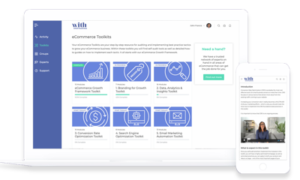What is the purpose of your content?
It is important to decide why to do content marketing and how it will help tell the story of your brand. On a strategic level, content must mean more than a blog post, visual, status update or tweet. You must think about your content achieving a business goal or objective – what is its purpose?
It is important to vary your content types, formats and timings based on the various performance of different social platforms.
Why define a purpose for your content?
Defining the purpose for your content can help you assist in ensuring your content is effective. Your purpose or objective might be to create awareness, trust, educate or convert a customer.
Having an objective when developing your content will ultimately build you an asset that can drive a return over time, particularly when developing evergreen content.
Once you have set your objective you need to identify the best format to deliver that content. Using a variety of formats across your social media platforms have a number of benefits:
- It ensures your posts and pages attract attention, it engages followers and builds influence.
- Yielding tailored content and formats to each social media platform then appeals to the largest audience.
- Testing and learning which formats on which platforms perform better with your different target audiences and then optimized can drive sustainable growth.
How-to tips for your content development
1. You need more than just an interesting subject
Even if your product category is naturally interesting, execution is very important. Spend time posting well-edited photos and well-written copy. Volume certainly isn’t everything on Facebook; consistent quality is much more significant.
2. It’s good to be brief, but it’s better to be good
Short messages stand out on Facebook — but long messages work if they’re compelling. Communicate your message succinctly unless you absolutely need the extra words.
3. Use smarter targeting
Page Post Targeting (PPT) on Facebook allows you to handpick your audience and deliver a clear message to a smaller group. For instance, you can direct your message to reach women between the ages of 25-35 who have “liked” your page (you will learn more about this in social advertising).
4. Measure fan engagement
Finding your Facebook impact means measuring how fans interact with your content. That way, you can figure out which messages inspire action — and create more like them.
5. Show your company personality
Instead of a lone product image or a posed staff picture, show your product or team in action for an image with more personality. Action shots help your audience imagine themselves as a customer or client.
6. Connect your shop to Instagram + Tag products
Coupling images with blog or other website content adds a call to action to your visual stimuli. In this way, picture sharing sites become viable arrows back to your content.
7. Share unique behind-the-scenes and personal content
Get personal with your audience; give followers an insider view of the inner workings of your organization. A “behind-the-scenes” feel comes with an exclusivity factor.
8. Tie promotions to images
Add promotions to visual content to help with engagement and conversions, and create a call to action that leads followers toward more content.
9. Turn followers into sources of content
Ask your followers for pictures that represent your brand, and reward the best contributors with recognition. Offer them a sense of ownership to strengthen the relationship.
10. Video: Mix professional and homegrown videos
Just because you don’t always have a professional videographer at your disposal doesn’t mean you can’t make great videos. Showcase professional videos alongside homegrown ones to help humanize your brand.
11. Video: Show, don’t tell
Demonstrating your products or services in action is a much more effective way to create compelling videos than talking about what you do.
Keep it short. Your audience’s attention span can be measured in seconds, even for video content. Keep your content short — less than a minute long, if possible — to deliver a succinct message.
12. Video: Think compilations, not long shots
If you do create long-form video, give your audience little snippets of content that piece together a coherent narrative. Developing a video with a single shot (like a speaker presenting for five minutes) can easily fatigue your audience.


